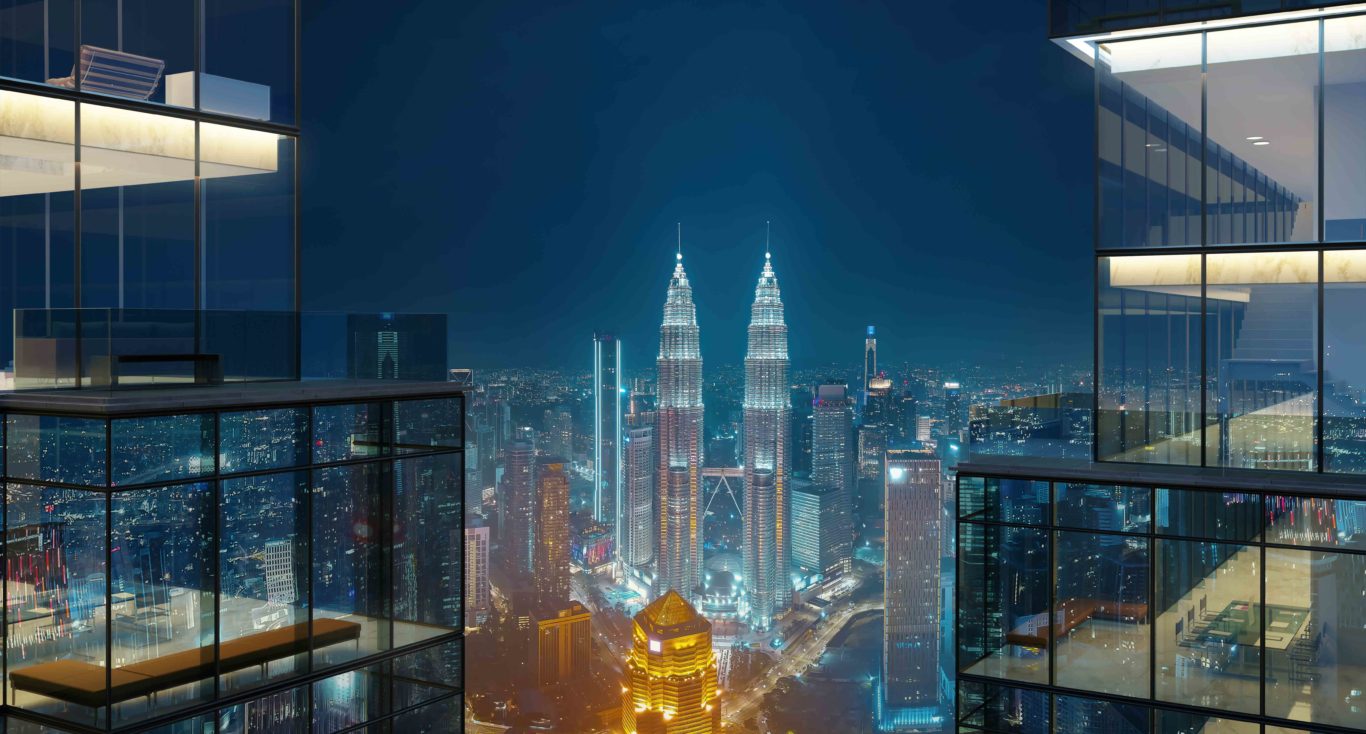There are several factors why the Malaysian property market is among the most attractive in Southeast Asia (SEA). So much so that as the SEA property market warms up, local and international investors are paying attention to Malaysia and its capital city of Kuala Lumpur.
ALSO READ: Property Investors Turn Attention To Malaysia
But first let’s look at the steady economic growth of the Malaysian property market over the last decade plus.
Malaysian property then and now
According to the National Property Information Centre (NAPIC), between 1990 and 2019, the total number of transactions in the property industry more than doubled from 148,000 to 328,000.
More significantly, the value increase over the last 20 years is almost ten-fold, from RM15.16 billion to RM141.40 billion, according to PropertyGuru’s report of the numbers.
And the key contributor to this growth is residential properties, with the total value of the sector having tripled from 2001 to 2019, growing from RM22 billion to RM72 billion.
While the global property market was badly affected during the peak pandemic years of 2020 to 2022 – and even now we are bearing with the reverberations effected by Covid-19 – nevertheless, experts have predicted a modest but hopeful 4% – 5% expansion in economic growth for 2023.
This is supported by firm domestic demand and improvements in labour market, albeit tempered by higher interest rates and higher property asking prices.
Juwai IQI’s Group CEO Kashif Ansari also predicted a similar percentage of expansion for the Malaysian residential property market, at 5% for the year, while as of 2022, Kuala Lumpur has been the best performing market for new launches among Malaysian cities.
A very positive increase in real estate market activity in Q1 2023, both in transaction volume and value, is a testament to rebounding growth. “In March, the aggregate value of real estate transactions surged 40 per cent compared to February, reaching RM18.2 billion. That’s the highest it has been in 12 months.
“Transaction volume also climbed to 33,233 in March, the highest since September and the fourth highest level of the last 12 months,” Kashif had said in the report by Business Today.
 Panoramic view of Kuala Lumpur City Centre
Panoramic view of Kuala Lumpur City Centre
Kuala Lumpur Price Trends
City-centre living sometimes gets a bad rap, but there is no denying the convenience and value of living in the middle of a thriving lifestyle and entertainment scene, with comprehensive infrastructure and transport development, and making your home in a prestigious address, no less.
Looking back, as reported in a 20-years residential property performance survey by EdgeProp Malaysia, the average price for a house in Kuala Lumpur in 2000 was RM245,249, and in Q1 2021, it was RM708,812, with the average annual increase at 5.6%.
Despite the pandemic and a few years or downward patterns, key incentives and favourable government initiatives had provided a boost and helped maintain steady annual growth in the last few years. This also strengthens confidence for foreign investors when it comes to stability of the Malaysian property market.
What about properties in the heart of the city’s ‘Golden Triangle’, the Kuala Lumpur City Centre (KLCC) area? Averaging the highest prices among Malaysian property locations, offerings in KLCC differentiate themselves with luxury offerings and prime location value.
With increasingly strong interest from international buyers as well as local property hunters, the first half of 2022 saw properties priced above RM1 million increase in transaction by 43.3% – a positive sign for certain.
 Spring concept design by British designer Kelly Hoppen for 8 Conlay’s branded residence, YOO8 serviced by Kempinski
Spring concept design by British designer Kelly Hoppen for 8 Conlay’s branded residence, YOO8 serviced by Kempinski
So, what other factors may have a positive influence on the Kuala Lumpur or KLCC property landscape?
- Transportation and Infrastructure
Knight Frank reported that the opening of the city train transit, MRT Putrajaya Line, earlier this year has a direct positive impact on property values along the route. This is expected to be boosted even further when the MRT Circle Line project is completed by 2030, thereby improving connectivity within Greater Kuala Lumpur.
- Environmental and Sustainability
Twenty-first century homebuyers are discerning and increasingly concerned about aspects of environmental, social and governance (ESG). As such, property developers and city planners are incorporating more and more eco-friendly elements and fundamental designs into their projects, with such residences being more attractive especially in a post-pandemic world.
- Supply and Demand
There are many factors that affect the supply and demand of the real estate market, and balance is important. But an increase in demand is often a sign of a healthy and growing consumer interest. Malaysia is a country with a young population, with the average population age being 30 years old. This bodes well for the property market.
Even in 2022, there was an increase in demand for rental property by 57.91% compared to the year before, while the Malaysia Property Market Report by NAPIC also showed an uptick in property prices, even as supply increased by 13.21%. Whilst growth was still slow, the undeniable consumer interest indicates an economy that is recovering and ready for buyers to invest in.
If you’re looking to invest in the best of freehold properties in the heart of KLCC, 8 Conlay is set to house the first YOO-designed twin branded residence in Malaysia, YOO8 serviced by Kempinski, with interiors designed by award-winning global stars Kelly Hoppen and Steve Leung.
Situated at the prestigious and historic embassy row intersecting the city’s lifestyle, financial, and entertainment districts, 8 Conlay is a LEED-certified green development that will house the first and only Kempinski Hotel in Malaysia, the 8 Conlay Kempinski Hotel. The Conlay MRT station sits just 400-metres away, providing direct connectivity to all of Kuala Lumpur and to the airport. To find out more, contact us here.
